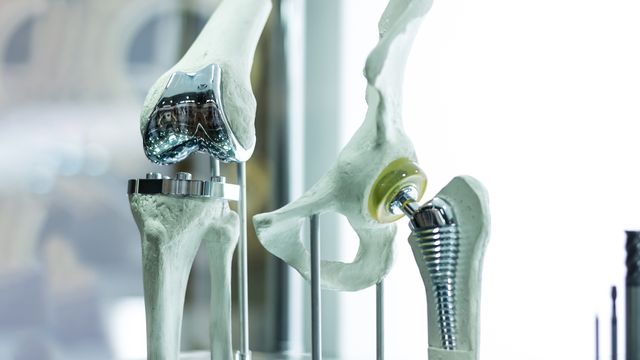Evidence of muscle cells transforming into bone
In mouse models, researchers showed that Prg4+—a type of stem cell that originates in the muscles that support the skeleton—was crucial to bone repairs—because the cells could actually transform from muscle cells to bone cells. Moving forward, the researchers believe that they could either stimulate the activity of Prg4+ cells within someone’s own body via growth factor or small molecule-based medicines, or even introduce the activated form of these cells directly to the fracture site to accelerate the bone healing.
The widely-held view is that fractured bone is mainly repaired by stem cells in the periosteum, the membrane that covers all bones. However, this repair doesn’t always work, often in the cases of “open fractures,” when a broken bone breaks the skin and often includes a huge loss of soft tissues. Why this happens is not totally understood.
Qin, her co-author Jaimo Ahn, PhD, a professor of Orthopaedics at Emory University and a former Penn Medicine researcher, and their colleagues discovered that Prg4+ was a type of fibro-adipogenic progenitor (FAP), a known type of stem cell originating in skeletal muscle.
The study team saw that Prg4+ acts the way a restoration company does after a flood or fire in a building: it rushes to the damage site and gets to work on the repair jobs that make a structure whole again.
Prg4+ responded quickly to skeletal injuries, first migrating to the fracture from skeletal muscle. After that, Prg4+ was observed producing all the types of cells necessary to repair a bone— chondrocytes, osteoblasts, and osteocytes—in between the bone callus (the temporary structure formed on the bone to guide healing) and skeletal muscle.
Later in healed bones, the researchers saw cells that had come from the original Prg4+ cells fully become bone cells, which then stood ready to repair future possible fractures by giving rise to periosteum stem cells. This indicated, for the first time ever, that stem cells can transform from muscle to bone.
To further prove the importance of Prg4+, when the researchers purposely destroyed Prg4+ cells, it significantly slowed healing and repair activity.
Potential for simple or catastrophic injuries
Currently, most treatment practices for fractures focus on healing bone tissue itself. But Qin, Ahn, and their colleagues have shown that extra emphasis placed on the muscles next to bones holds significant keys to injury healing.
While their research holds promise for catastrophic injuries like open fractures, these findings could also play a significant role in more routine injuries.
“This could have a real impact in areas where muscles are simply just not as prevalent, like the knee and ankle,” Ahn explained. “There’s also potentially a significant impact on older adults whose muscle mass diminishes naturally, and healing doesn’t occur like it once did.”
Future research, Qin said, will build on the current findings by diving deeper into the repair abilities of other fibro-adipogenic progenitor (FAP) stem cells.
Reference: He Q, Lu J, Liang Q, et al. Prg4+ fibroadipogenic progenitors in muscle are crucial for bone fracture repair. PNAS. 2025;122(31):e2417806122. doi: 10.1073/pnas.2417806122
This article has been republished from the following materials. Note: material may have been edited for length and content. For further information, please contact the cited source. Our press release publishing policy can be accessed here.
